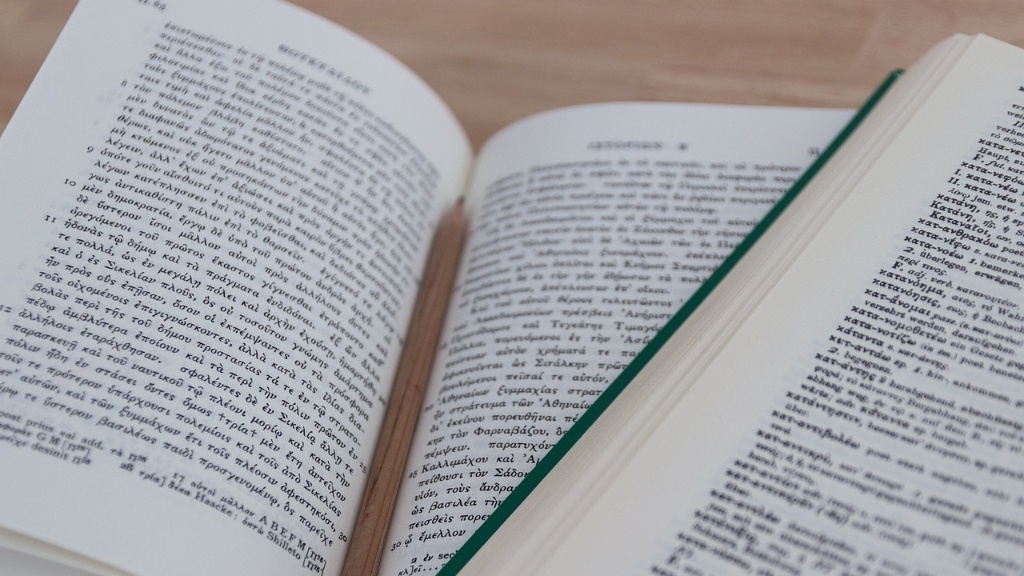The poetic form known as iambic pentameter is one of the most recognizable in literature, with its distinct beat forming the foundation for many of the most beloved poems and plays throughout history. This particular form of rhythmical verse has been used by poets for centuries, from William Shakespeare to W.H. Auden. But what exactly is an iambic pentameter in poetry? To experienced poets, this may appear as an obvious question, but for those who are just diving into the world of literary art, understanding the technicalities of this poetic form is essential in composing brilliant works of art.
An iambic pentameter is a type of metrical line composed of five metrical feet of two syllables each, in which the first syllable of each foot is unstressed and the second syllable is stressed. This rhythmic pattern is referred to as an iamb, and when combined with five feet, the result is an iambic pentameter. Essence of this poetic form is that it emphasizes a light and springy rhythm, rather than the heavy and plodding rhythm of prose. This is why it’s so often used in literary works — it allows writers to bring a melody to their work and produce expressive and emotive pieces of art.
A great example of iambic pentameter can be found in William Shakespeare’s Sonnet 18: “Shall I compare thee to a summer’s day? / Thou art more lovely and more temperate / Rough winds do shake the darling buds of May / And summer’s lease hath all too short a date”. This portion of the sonnet exemplifies iambic pentameter in its finest, as each line contains five metrical feet of two syllables. The first syllable of each foot is unstressed, followed by a stressed syllable, creating that distinctive light and springy rhythm. This makes the sonnet even more enjoyable to read, as the rhythm of each line helps to emphasize the poem’s overall message.
Once a poet has recognized the definitive pattern of an iambic pentameter, there are a variety of uses for it in both professional and amateur pieces. This poetic form can be used to convey any kind of emotion — from deep sorrow to joyous ecstasy — and when combined with powerful imagery, can produce some remarkable literary works. The iambic pentameter is also useful for enhancing the overall mood of a piece. By strategically emphasizing words and using certain intonations, the poet can control the way the poem is read and how it is interpreted by the reader.
The ability to understand and utilize an iambic pentameter is important for any aspiring poet or writer, and it is also a valuable skill for those who critique and analyse literature. In either case, it is essential to recognize and appreciate the various nuances of this popular poetic form. Without the use of an iambic pentameter, some of history’s greatest pieces of literature may have been drastically different, and the world of poetry would be much poorer.
Varieties Of Iambic Pentameter
Although the typical iambic pentameter is composed of five pairs of unstressed and stressed syllables, variations and alternations of this pattern also exist. Iambic tetrameter and iambic trimeter are variations on the original standard, with four and three iambs per line respectively. Although these forms are used far less than iambic pentameter, they can be quite effective in certain situations and offer the poet a place to experiment with their art.
Some poems also feature a variation of iambic pentameter known as a blank verse. This form is composed entirely of iambs, but the feet don’t create a distinct and consistent pattern as in standard iambic pentameter. Instead, the feet may alternate and produce a more subtle and less obvious rhythm. This style can be used to create humorous and satirical pieces, as well as to add complexity to a more serious work.
Another variant of the iambic pentameter is the spondaic pentameter, which is composed entirely of stressed syllables. This is a much more forceful and powerful form of verse, often used for descriptions of battle or for narrating scenes of great drama or tragedy. Other poets also opt for a dactylic pentameter, which is composed of three syllable per foot: one long and two short. This same pattern can be used in combination with iambic pentameter to add an extra layer of complexity to the poem.
Using Iambic Pentameter In Writing
Although the iambic pentameter has been used for centuries, it is still relevant in modern literature. Poets and writers alike continue to utilize this form to enhance their art, whether they are composing a sonnet, a play or a short story. This means that aspiring writers today must understand how to use the iambic pentameter, and how it can help them to convey their messages more effectively.
For those who are new to the poetic form, it is best to begin with a few simple exercises. Writing short pieces in an iambic pentameter can help sharpen one’s skills and provide helpful practice when attempting to write longer works. Working with an already established piece can also be beneficial, as it will help the poet to recognize the natural rhythm of an iambic pentameter and its effects on the overall message.
Whether used for comedic purposes, or to lend emphasis to a powerful line, poets have found a great resource in the iambic pentameter. Although mastering this particular form of verse may take time, having a deep understanding of it will undoubtedly benefit any poet or writer, beginner or experienced.
Practicing Writing Iambic Pentameter
To really develop the skill of writing in iambic pentameter, it pays off to practice thoroughly and continuously. Reading existing works out loud can help to identify the structure of the verse and improve the ability to recognize the subtleties of the rhythm. Additionally, starting with simple structures and gradually progressing to more complex ones over time is also beneficial.
It’s easy to get discouraged when practising and making mistakes, but it’s important to not forget that it’s a learning process. If a poet is truly passionate about pursuing excellence in poetry and writing, patience and dedication are a must. Therefore, it’s important to enjoy the journey rather than to just focus on the result.
Finally, it’s worth keeping track of progress in order to stay motivated. Jotting down notes or creating written records of practice pieces can be helpful for evaluating and improving one’s craft. Writing down observations and thoughts throughout the journey can not only help to ensure that a poet’s learning process is fruitful, it can also help to keep them engaged and motivated when feeling discouraged.
Writing Iambic Pentameter Poetry
Once one has practiced the basics of writing iambic pentameter, putting it into a poem is the next logical step. However, this can be a tricky maneuver for an aspiring poet, as the desired result is to achieve a light and airy rhythm without seeming contrived or stale. Creating dynamic and clever iambic pentameter poetry takes practice and a keen sense for meter.
One of the best ways to master this form is to look for lines of existing iambic pentameter poetry that have inspired the poet. Examining these lines of poetry can help one to discover techniques that professionals have used to create their work, and how they were able to inject emotion and depth into their poems, while still maintaining the iambic pentameter structure.
Additionally, taking the time to get the creative juices flowing can be beneficial to the poet. Going for a walk or spending time in nature can help to calm the mind and offer fresh inspiration. This can help to produce unique and original works, while still staying true to the iambic pentameter form.
Finally, when creating a poetic work, it’s important to not forget about the purpose and message that the poem is attempting to convey. Although the structure and rhythm of the poem is important, the content should always take center stage. With techniques and guidance from experienced poets, any aspiring wordsmith can successfully put together a beautiful and powerful poem using iambic pentameter.
Understanding Metrical Decorum In Iambic Pentameter
In iambic pentameter, there is an unspoken rule called metrical decorum, which dictates the rhythm of the poem and the flow of words to create a harmonious cadence. This rule is the cornerstone of the poetic form, meaning that the constraints of the metre should remain unbroken. In essence, the poet should not try to force metre into the poem but instead let it evolve naturally.
In creating an iambic pentameter poem, it is essential not to rush the process and take the time to consider each word carefully. Breaking metrical decorum can often cause the flow of the poem to be compromised, resulting in an uneven and halted rhythm. This is why it’s so important to remember the importance of meter in any iambic pentameter poem and adhere to the structure.
Additionally, it is equally equally important that the line endings don’t sound forced or unnatural. When transitioning between lines, there should be a clear connection to ensure that the rhetoric is effortless and consistent. This can be especially difficult when dealing with the cumbersome English language when some of the words needed to complete the line may not easily fit the metre.
However, with practice, one can begin to more naturally incorporate a more free-flowing meter. It is important to remember that this should be a gradual process, and it’s okay if some lines break the tendency of the metre with every now and then. This can add complexity to the piece and make it all the more enjoyable to read.
Appreciating Iambic Pentameter In Other Works
Understanding and using the iambic pentameter is crucial for producing great works of poetry, but one should also take the time to comprehend the genius of the form in some of the ancient masters. Reading works of Shakespeare or other great poets, such as Alexander Pope or John Donne, provides priceless insight into the ways of the iambic pentameter and how it was used in the age of poetry.
Going through the works of these authors will illustrate the use of that unique light and springy rhythm, in a masterful blend of language and meter. Additionally, analyzing these works and the effect of their rhythm can give the aspiring poet unique insight into how they can improve their own craft.
Recognizing and appreciating the subtle differences between various authors’ approaches to the iambic pentameter is a crucial step in the journey of mastering this poetic form. Taking shortcuts or relying solely on one author’s style is a sure road to mediocrity, as the structure and style of the iambic pentameter is too varied and vast to be limited to a single approach.
Ultimately, having a deep understanding of this classic form of poetry will give an aspiring wordsmith an invaluable opportunity to create thoughtful and emotive pieces of literature. This can be achieved through extensive reading, diligent practice and an appreciation for the timeless works of authors who have gone before.





